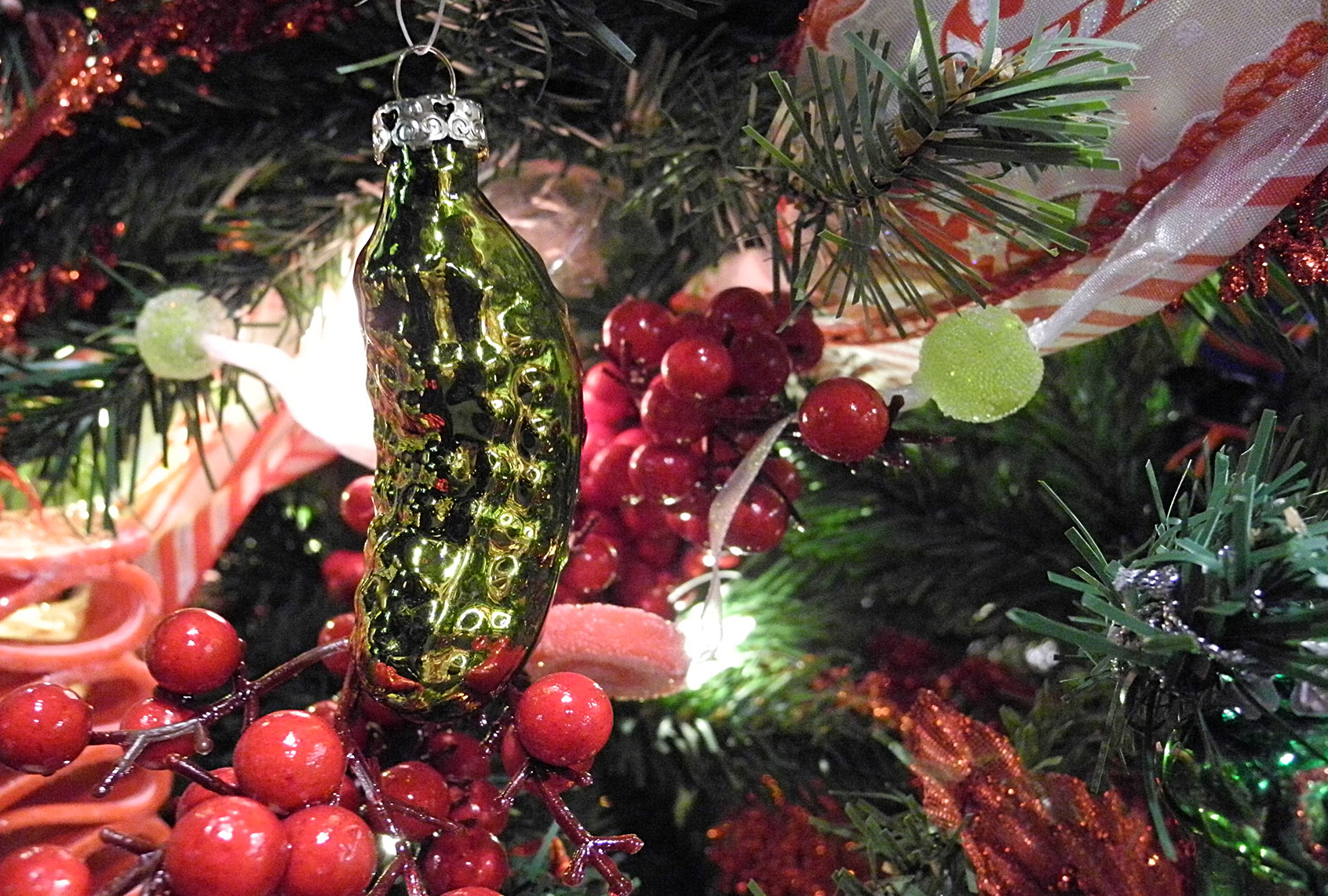Every family has its own holiday traditions. Maybe they open Christmas presents after dinner. Perhaps they hang stockings up for their pet. Some might display homemade decorations.
Others might hide a Christmas pickle ornament in their tree.
WHAT’S THE DILL?
This tradition, which allegedly has roots in Germany, has been adopted by a growing number of American households in the Midwest and elsewhere. Usually, the glossy green ornament in the shape and texture of a pickle is hung somewhere deep in the tree. The first child to find the pickle on Christmas morning is the recipient of good luck in the coming year and a special gift. (The other children are presumably fresh out of luck.)
Many of these families are under the impression that the Christmas pickle, or Weihnachtsgurke, was brought over to the United States by German immigrants. It’s been said the poverty-stricken people of 19th-century Spreewald, too poor to have actual ornaments, hung pickles instead.
While all of this makes some sense — or as much sense as a brined holiday ornament is ever going to make—the reality is that the vast majority of Germans have never heard of this tradition. In 2016, after word of Americans hanging pickles was picked up by German newspapers, a survey found that 91 percent of German households had no idea about Christmas pickles or what they were intended to represent.
PRINT THE LEGEND
It turns out that clever marketing may be behind it. When retail giant Woolworths began importing German ornaments in the 1890s, they noted that some were in the shape of a pickle and began ascribing a deeper meaning behind it. This was no ordinary ornament — it was a pickle steeped in the customs of an exotic land.
Much later, in the 1990s, ornament artisans began relating the apocryphal story of the pickle, saying its green color blended with the tree and that a child would be rewarded for their “keen observation” in finding it.
Another far more disturbing folk origin involves an evil shopkeeper in Myra, a town that hosted the benevolent St. Nicholas in the Middle Ages. As the story goes, the shopkeeper enjoyed dismembering children and stuffing them into pickle barrels. St. Nicholas prayed, and the mutilated children emerged from their briny fates alive and well.
Whether it had origins in Spreewald or gruesome fantasies, it seems Americans embraced the tale. One prominent German ornament manufacturer, Lauscha Glass Center, started making the ornaments in the mid-1990s — but only after one of their employees visited Michigan and saw the Christmas pickle adorning trees there. So if you’re looking to do something different this season, consider the pickle. It’s either a German tradition few Germans have ever heard of, or the result of pickled child mutilation. Happy holidays.
This story was originally published in 2018; it has been updated for 2021.


